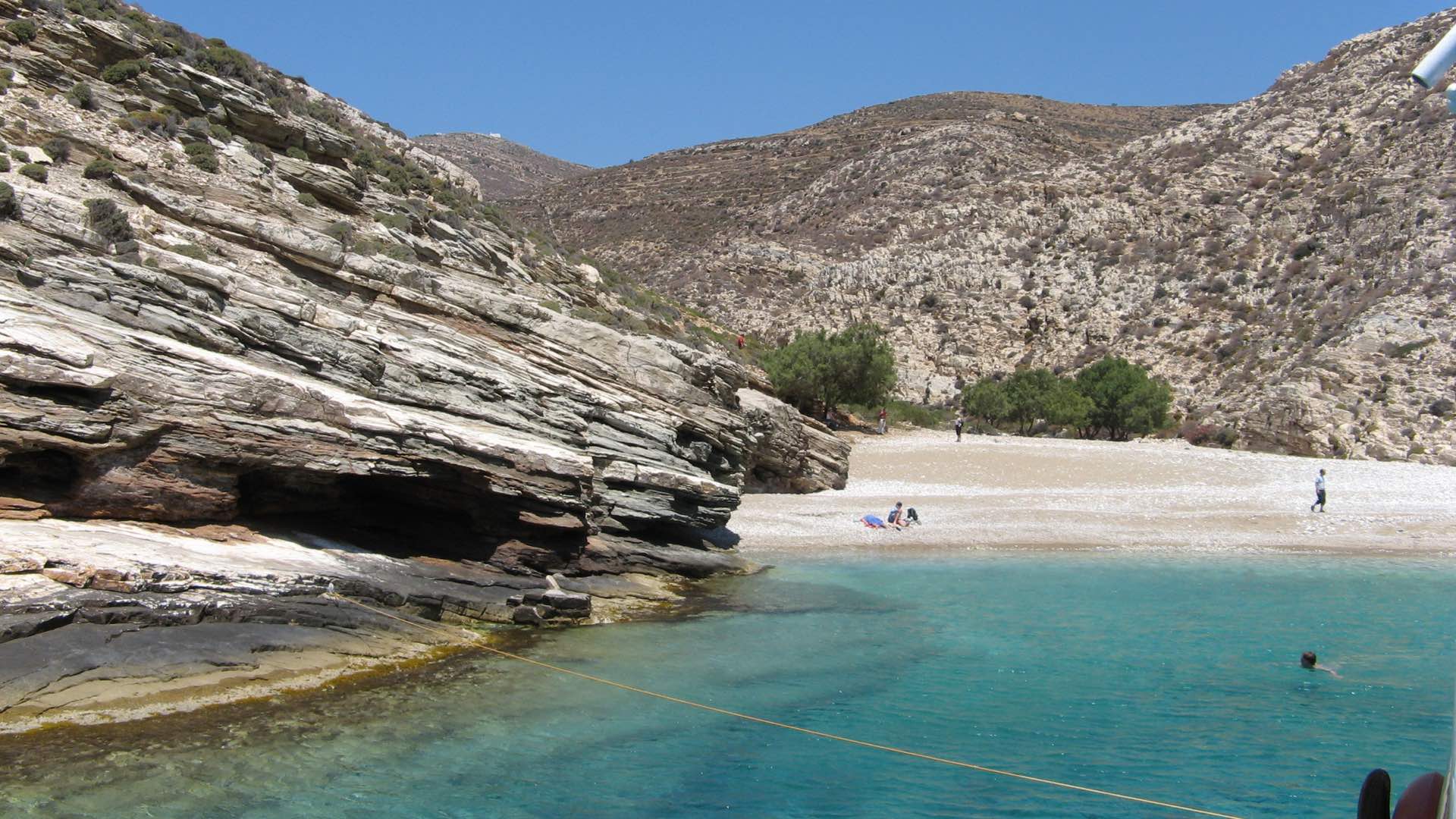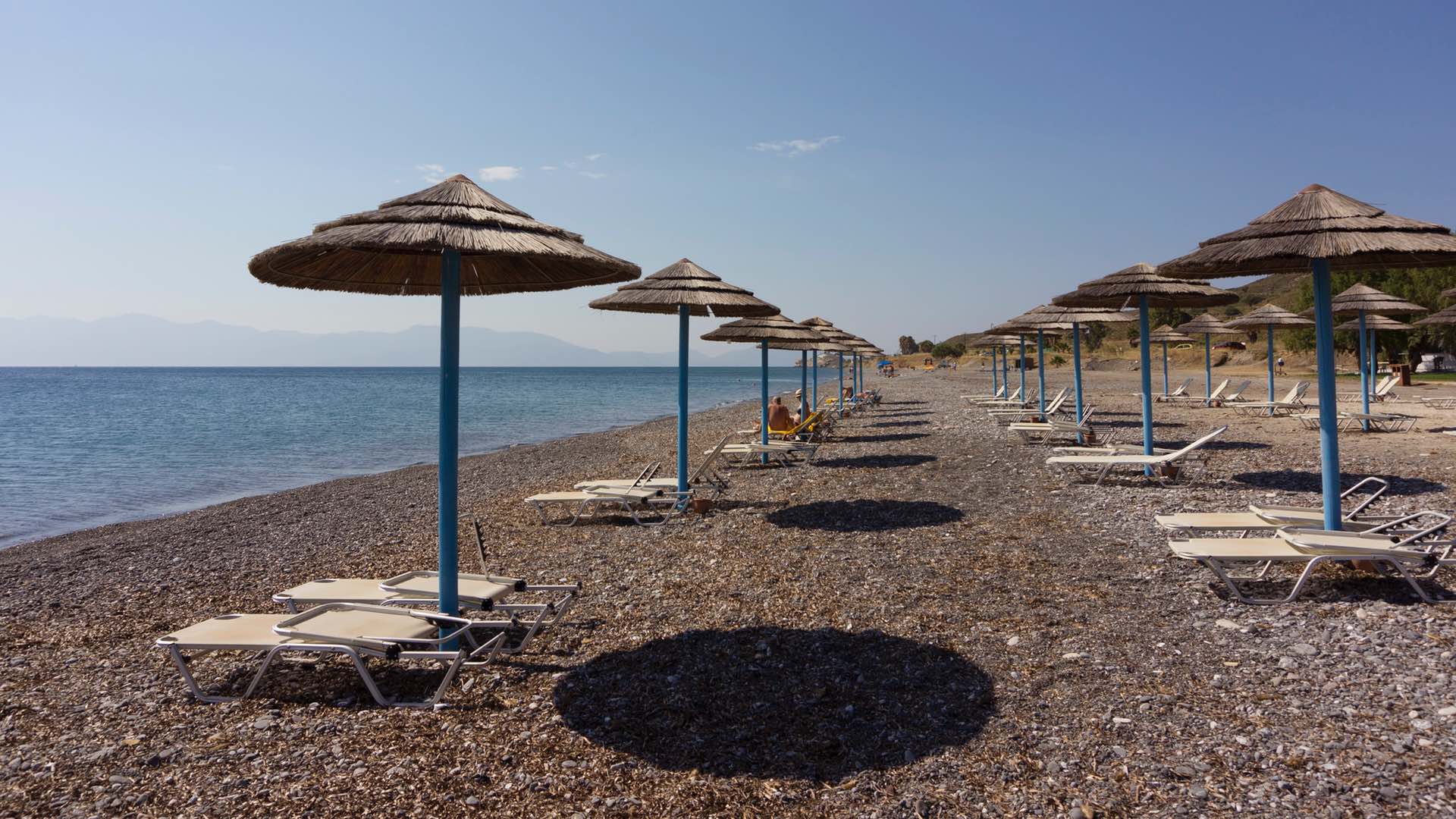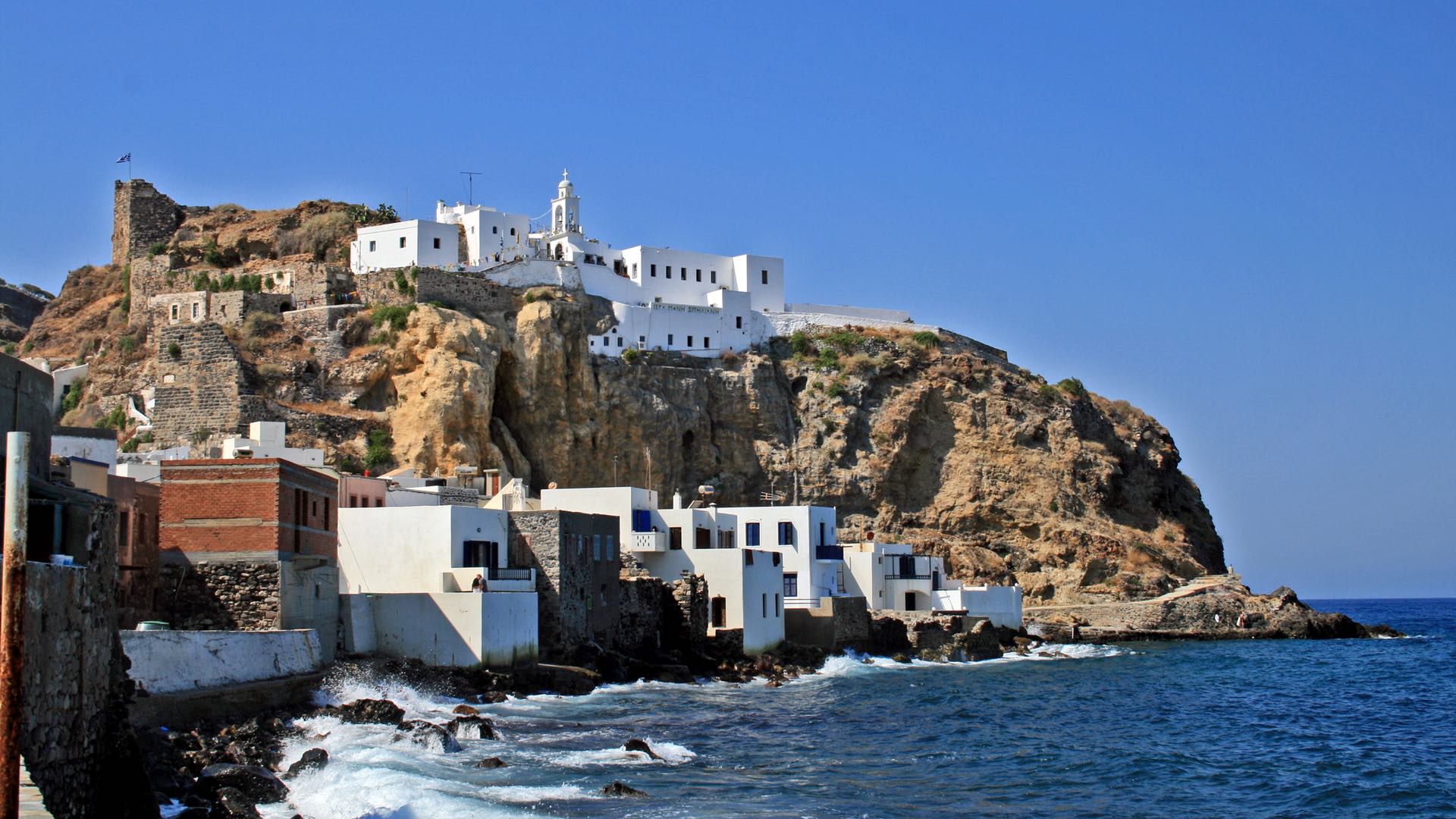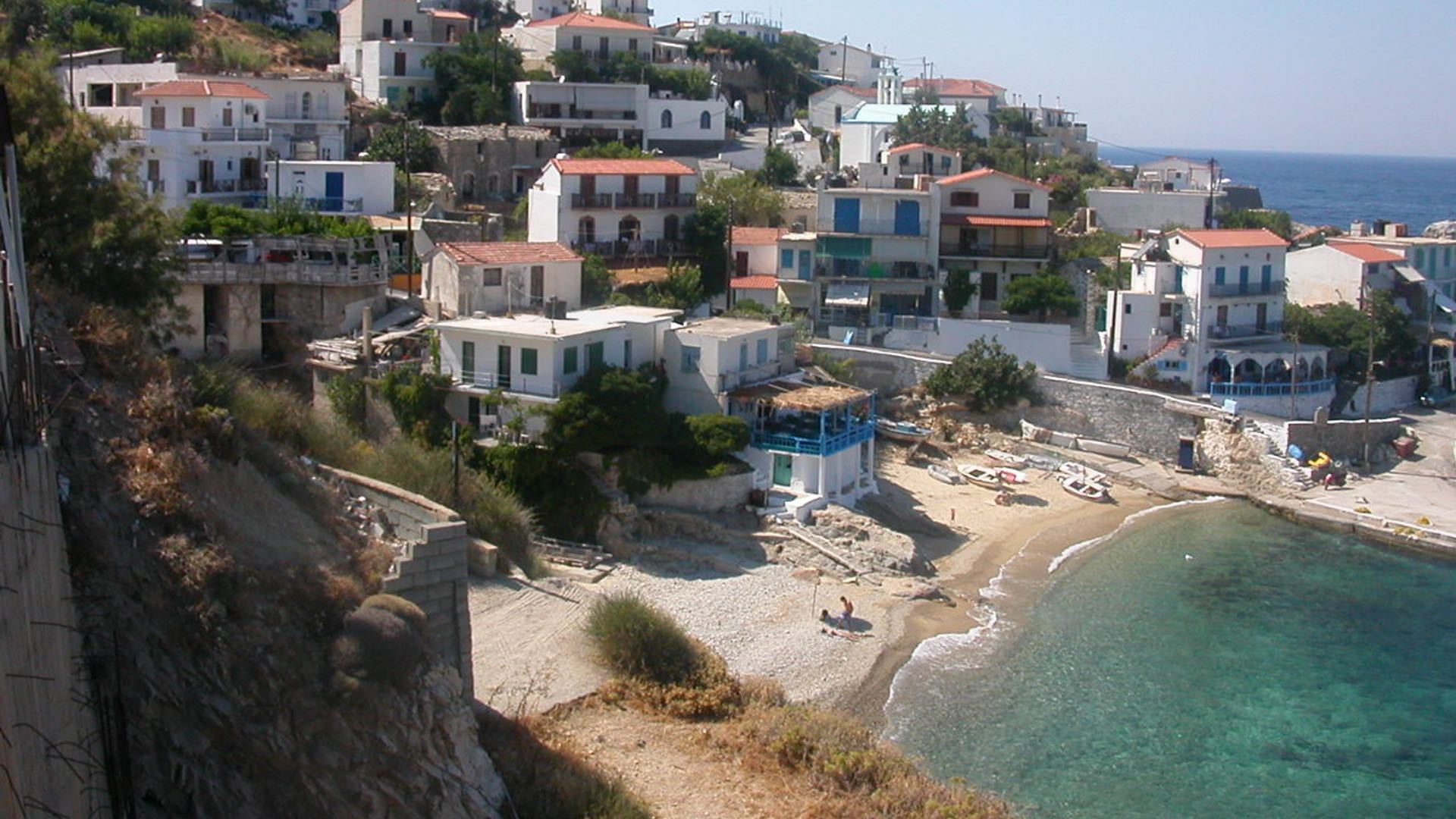Eight Underrated Islands to Visit in Greece That Aren't Mykonos or Santorini
Find Greek island paradise without hoards of tourists.
When it gets to July, it seems like everyone you know is planning a European holiday — and the Greek islands are on many a traveller's summer itinerary. Most flock to islands like Santorini, Mykonos or Ios — but, really, that's just skimming the surface. While most people can count, say, six islands confidently, there are actually 6000 all up — 227 have people living on them, and the rest you can kayak or sail to for the day.
So while we don't want to downplay the beauty of the well-travelled tourist islands, we're putting in a good word for the more underrated parts of Greece, which are extremely — if not more — worthy of your holiday time. Plus, these eight islands are nowhere near as crowded in European summer.
So, as you make Europe summer plans, consider these alternative Greek jewels as a setting for snacking, finding serenity or smashing plates — what you decide to do there is up to you.

John Karakatsanis via Flickr.
SKOPELOS
Waltzing around Skopelos may induce flashbacks of Pierce Brosnan's lack of singing ability, as a large portion of 2008's Mamma Mia was shot on the island. More fondly, you may recognise Agios Ioannis, the tiny little church perched on an 100-metre-high rock that hosted Meryl Streep's impassioned The Winner Takes it All solo. Skopelos' idyllic beaches are aplenty, but stray away from Kastani beach — also featured in the film — as its shores are one of the few spots on the island that gets crowded. Try Limnonari or Glysteri instead. If you hire a car to drive around, you'll notice how much this island differs from others in terms of terrain and vegetation, which is due to its northern situation. When springtime comes around, Skopelos is carpeted in wild flowers such as poppies and irises, camomile starts to pop up in June, and plums and almonds emerge as September nears.

Livadaki beach, esther via Flickr.
FOLEGANDROS
Clinging to the southern edge of the Cyclades group of islands is Folegandros, an island which travellers don't usually reach as they choose to halt their journey on Ios or Mykonos. But to venture a little further is a very wise choice; travellers are still greeted with the same, mesmeric turquoise waters and can enjoy them in more tranquil surrounds. Angali, Agios Nikolaos and Livadaki are notable beaches to unwind at. Folegandros is tiny — a 12-kilometre run will get you from one end of the island to the other — and there is no airport, so to get there you need to take a ferry from Athens, which only adds to the odyssey. After you dock and drop off your luggage, hire a quad bike and zoom your way through some seriously fresh air.

Rachel Docherty via Flickr.
KOS
The sunset at Kos' Agios Theologos beach gives Santorini's a run for its money. Feast on fresh octopus at the beach's only restaurant and watch the sun turn the sky into a hypnotic fuchsia as it disappears into the Aegean. In the morning, take a swim to church. At the western head of the island you'll find the village Kefalos, which literally translates as 'head'. Kefalos' relentlessly cold beach Agios Stefanos hosts a little church, sitting on microscopic island about 200 metres from shore. Adventurers can take a swim through the waters, above the sea life to reach it. Kos also has a rich historical past, filled with ruins and sites that honour Hippocrates. You'll find most of them the capital Kos Town (the island proves to be quite literal in its naming approach). From Kos Town's port, it's a measly 20-minute ferry ride to Bodrum on Turkey's southwest coast. So, if you're continuing on into Turkey, Kos is a wise place to wrap up your Greece trip.

The Blue Cave, Tatsushi Okamoto via Flickr.
KASTELORIZO
Instead of white villages and blue motifs, Kastelorizo's houses are boldly colourful and expressive. Its aesthetic significantly differs from other islands which may have to do with the island's far-flung geographical positioning — it just clutches onto the eastern edge of the Aegean Sea. You'll find neoclassical mansions, rocky fortresses, miniature seaside churches and one of the most insanely well-kept secrets in Greece: the Blue Cave. A truly majestic spot to swim, the cave has stalactites that overlook deep blue waters that are slightly lit up by the reflection of sun rays that manage to creep in. If you seek total seclusion and serenity, head to Kastelorizo — we doubt the population of 490 will disturb you.

Mandraki, Karelj via Wikimedia Commons.
NISYROS
Nisyros is very much a calm island, undisturbed by tourists. What we're hoping stays calm is the volcano, which is one of the only active ones in the country. Nonetheless, you can get up close with fumaroles that hiss as you get close. And when you're not exploring Nisyros' terrain, try and delve into some local produce. Those looking for a drink must track down some koukouzina, a distillation of grapes and figs with a taste similar to raki. And it's no revelation that cheese and wine are a glorious combination but trigas takes it to the next level — it's a hard goats' cheese cooked in wine. Enjoy these delicacies in the capital village Mandraki, which rests right on the water. Its roads are made up of intricate pebble patterns, streets are peppered with flowers and cats can be seen on the locals' doorsteps.

View from St John Monastery, Tomisti via Wikimedia Commons.
PATMOS
Rich in historical and religious past, Patmos is where Saint John is said to have written the Book of Revelation, and the Cave of the Apocalypse has been spectacularly transformed into a church. The island continues to draw religious tourists and pilgrims from all corners of the world. Near the cave you'll find the old hilltop town of Chora, which is crowned by what at first glance looks like a castle, but, is actually the UNESCO-listed Monastery of St John, built in the 11th century. It solidifies Patmos' position of being a place of religious knowledge and learning in Greece. Plus, the view — which overlooks the entire island — is insane. Worth a visit whether you're religious or not.

t_y_l via Flickr.
IKARIA
Ikaria is heralded as the island of longevity. Dementia is relatively absent, thanks to good diet, incredible produce and a pretty stress-free quality of life. Feast on fresh goats' cheese, fish straight from the sea and tomatoes so flavoursome you won't know what hit you. The local panigiri (that is, festivals) are something you'll want to get in on. Pull up a chair with the locals (after asking if it's okay that you do so), grab some food and then dance it off, Greek style. Ikaria is an inspiring speck of land in the North Aegean Sea, lush and green, separating it from other islands that suffer from dryness.

heipei via Flickr.
KALAMATA
While Kalamata is not an island — it's located on the Peloponnese peninsula in the south — if you do wish to visit an actual city in Greece, this is the one to go for. A lot of Greek Australians emigrated from the Peloponnese city, and many will tell you how much they miss it. We can understand why. The city has endured its fair share of Spartan domination and battles, but, nowadays, you can party it up in Kalamata's abundance of clubs and bars. The next day, rejuvenate in the contemplation of the warm Mediterranean sun — just like the Greeks.





